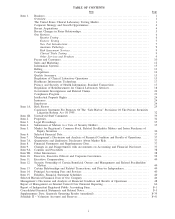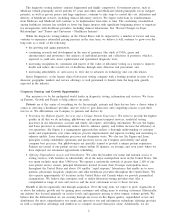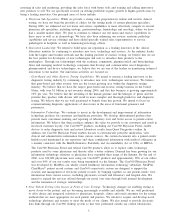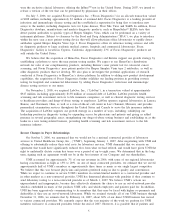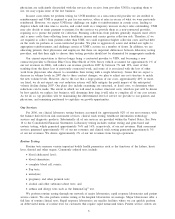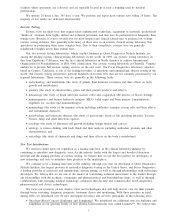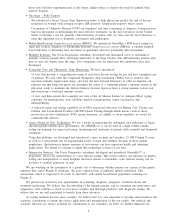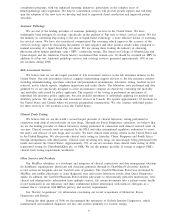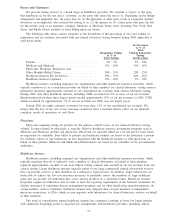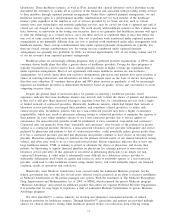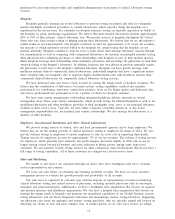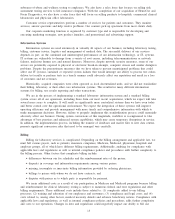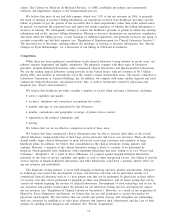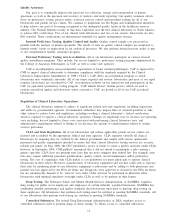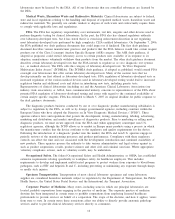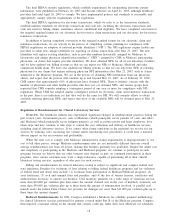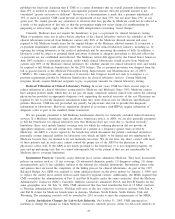Quest Diagnostics 2006 Annual Report Download - page 31
Download and view the complete annual report
Please find page 31 of the 2006 Quest Diagnostics annual report below. You can navigate through the pages in the report by either clicking on the pages listed below, or by using the keyword search tool below to find specific information within the annual report.
Payers and Customers
We provide testing services to a broad range of healthcare providers. We consider a “payer” as the party
that reimburses us for the test and a “customer” as the party who refers the test to us. Depending on the billing
arrangement and applicable law, the payer may be (1) the physician or other party (such as a hospital, another
laboratory or an employer) who referred the testing to us, (2) the patient, or (3) a third party who pays the bill
for the patient, such as an insurance company, Medicare or Medicaid. Some states, including New York, New
Jersey and Rhode Island, prohibit us from billing physician clients.
The following table shows current estimates of the breakdown of the percentage of our total volume of
requisitions and net revenues associated with our clinical laboratory testing business during 2006 applicable to
each payer group:
Requisition Volume
as % of
Total Volume
Net Revenues
as % of
Total
Clinical Laboratory
Testing
Net Revenues
Patients ................................................. 2% - 5% 5% - 10%
Medicare and Medicaid .................................. 15% - 20% 15% - 20%
Physicians, Hospitals, Employers and
Other Monthly-Billed Clients . . ........................... 30% - 35% 20% - 25%
Healthcare Insurers-Fee-for-Service ....................... 30% - 35% 40% - 45%
Healthcare Insurers-Capitated . . ........................... 15% - 20% 5% - 10%
Healthcare insurers, including managed care organizations and other healthcare insurance providers, which
typically reimburse us as a contracted provider on behalf of their members for clinical laboratory testing services
performed, represent approximately one-half of our consolidated net revenues from clinical laboratory testing.
During 2006, only three healthcare insurers, including UNH, accounted for 5% or more of our net revenues.
Reimbursement from these three largest payers totaled approximately 19% of our net revenues in 2006. UNH,
which accounted for approximately 7% of our net revenues for 2006, was our largest payer.
During 2006, no single customer accounted for more than 1.5% of our consolidated net revenues. We
believe that the loss of any one of our customers would not have a material adverse effect on our financial
condition, results of operations or cash flows.
Physicians
Physicians requiring testing for patients are the primary referral source of our clinical laboratory testing
volume. Testing referred by physicians is typically billed to healthcare insurers, government programs such as
Medicare and Medicaid, patients and physicians. Physicians are typically billed on a fee-for-service basis based
on negotiated fee schedules. Fees billed to patients and healthcare insurers are based on the laboratory’s patient
fee schedule, subject to any limitations on fees negotiated with the healthcare insurers or with physicians on
behalf of their patients. Medicare and Medicaid reimbursements are based on fee schedules set by governmental
authorities.
Healthcare Insurers
Healthcare insurers, including managed care organizations and other healthcare insurance providers, which
typically negotiate directly or indirectly with a number of clinical laboratories on behalf of their members,
represent approximately one-half of our total clinical testing volumes and one-half of our net revenues from our
clinical testing. Larger healthcare insurers typically prefer to use large commercial clinical laboratories because
they can provide services to their members on a national or regional basis. In addition, larger laboratories are
better able to achieve the low-cost structures necessary to profitably service the members of large healthcare
plans and can provide test utilization data across various products in a consistent format. Healthcare insurers
frequently require test utilization data in order to meet the reporting requirements of the National Committee for
Quality Assurance to implement disease management programs and for other health plan operation purposes. In
certain markets, such as California, healthcare insurers may delegate their covered members to independent
physician associations, or IPAs, which in turn negotiate with laboratories for clinical laboratory services on behalf
of their members.
The trend of consolidation among healthcare insurers has continued, resulting in fewer but larger insurers
with significant bargaining power to negotiate fee arrangements with healthcare providers, including clinical
10


